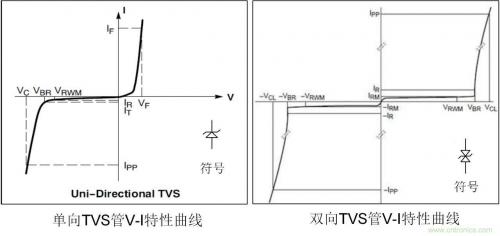current position: Home > News > News > Company dynamics
Switching power supply is the core of the product system power supply. When designing the power supply, an external protection circuit is needed to ensure the stable power supply of the power supply. Among them, TVS (transient suppression diode) and MOV (varistor) are particularly critical. How to select MOV and TVS when designing the peripheral circuit of the power supply? This article will answer for you.
In the application of switching power supply, in order to ensure the stability of the power supply of the switching power supply and the safety of the power supply itself, some peripheral circuits will be designed to ensure that the switching power supply is not damaged during use. These peripheral circuits include surge protection circuits, anti-static protection circuits, conducted disturbances, and pulse group anti-disturbance circuits. This article will discuss the use and selection methods of varistors MOV and TVS transient suppression diodes used in surge protection circuits.
As shown in Figure 1 is a relatively complete EMC recommended circuit: including surge protection, conducted disturbance, pulse group anti-interference and other circuits.

figure 1
As shown in Figure 2 is an independent DC-DC power supply anti-surge and anti-static protection circuit.

figure 2
The use and selection of varistor MOV
The varistor should work within its own rated parameter conditions, otherwise it may cause the varistor to heat, deteriorate, or even break down. The failure mode of the varistor is mainly a short circuit. If the short circuit time is too long, it will explode, catch fire, and damage the surrounding devices. Varistor has the characteristics of low price, strong anti-surge ability and large voltage range, and it has quite a wide range of applications. In summary, the selection method has the following points for reference:
1. According to the selection of varistor voltage (UN)
When selecting a varistor, first consider the fluctuation range of the working voltage of the power grid or circuit. When selecting the varistor's varistor voltage, there must be enough margin. In consideration of the power supply voltage continuously applied to both ends of the varistor, choosing a varistor with a higher varistor voltage can reduce the failure rate and prolong the service life, but there is also a disadvantage that the residual voltage will increase.
2. According to the selection of traffic (IP)
The nominal discharge current of the varistor should be greater than the required surge current or the maximum possible surge current. The nominal discharge current should be calculated according to the value of more than 10 impacts in the surge life rating curve of the varistor, which is about 30% of the maximum impact flow (ie 0.3IP).
3. According to the selection of clamping voltage (VC)
The clamping voltage of the varistor must be less than the maximum voltage that the protected component or equipment can withstand (ie, safe voltage).
In the DC circuit, UN≥(1.8~2)Vdc is required, in the AC circuit, UN≥(2~2.5)Vac, and in the signal circuit, UN≥(1.2-1.5)Vmax. At the same time, pay attention to avoid excessive residual voltage damaging the protected circuit when selecting, that is, the VC value cannot be selected too high. In order to solve the excessive residual voltage VC after the varistor is operated, when designing the circuit, a capacitor and a TVS tube are often connected in parallel after the MOV to absorb and discharge the residual voltage to ensure that the components in the circuit are not damaged.
The use and selection of TVS transient suppression diodes
TVS transient voltage suppressor is a high-efficiency protection device in the form of a diode with extremely fast response time and high surge absorption capacity. When both ends of the TVS receive a reverse transient overvoltage pulse, it can change the high impedance at both ends to low impedance at a very fast speed to absorb instantaneous large currents and clamp the voltage to a predetermined value, thereby effectively protecting the circuit Avoid damage to the components in the device. Therefore, TVS transient suppression diodes are widely used in surge and anti-static circuits. The following explains how to select the correct TVS tube.
TVS transient suppression diodes can be divided into unipolar TVS and bipolar TVS tubes according to their polarities. Figure 3 shows the V-I characteristic curves of two different TVS tubes:

figure 3
TVS transient suppression diodes can be used in a variety of circuit situations to protect circuit components. In summary, the following selection methods are available for reference:
1. First determine the maximum DC or continuous working voltage of the protected circuit, the rated standard voltage of the circuit and the "high-end" tolerance.
2. The TVS rated reverse turn-off VRWM should be greater than or equal to the maximum working voltage of the protected circuit. If the selected VRWM is too low, the device may enter an avalanche or the normal operation of the circuit may be affected by too much reverse leakage current.
3. The maximum clamping voltage VC of the TVS should be less than the damage voltage of the protected circuit.
4. In the specified pulse duration, the maximum peak pulse power consumption PM of the TVS must be greater than the peak pulse power that may appear in the protected circuit. After determining the maximum clamping voltage, its peak pulse current should be greater than the transient surge current.
5. For the protection of the data interface circuit, attention must be paid to selecting a TVS device with a suitable capacitor C.
6. Select the polarity and packaging structure of the TVS according to the purpose. It is more appropriate to use bipolar TVS for AC circuits, and it is more advantageous to use TVS arrays for multi-line protection.
In the use of switching power supply, surge protection circuit and anti-static protection circuit are indispensable. When designing the protection circuit, the varistor MOV and TVS transient suppression diode are often used together to play the role of multiple protection. Shown in Figure 2 is a surge protection circuit and anti-static protection circuit. TVS transient suppression diodes are used on the input and output terminals on the way. TVS is used for the output to ensure that the output terminal is damaged due to static electricity or surge voltage generated by the power terminal.
Tel: 0755-83948880
Fax: 0755-83948881
E-mail: sales@sunshineic.com
Add: RM 603, Building 405, Shangbu Industrial Area, Zhenxing RD, Futian District , Shenzhen, China
 Wechat QR code
Wechat QR code
 Phone QR code
Phone QR code